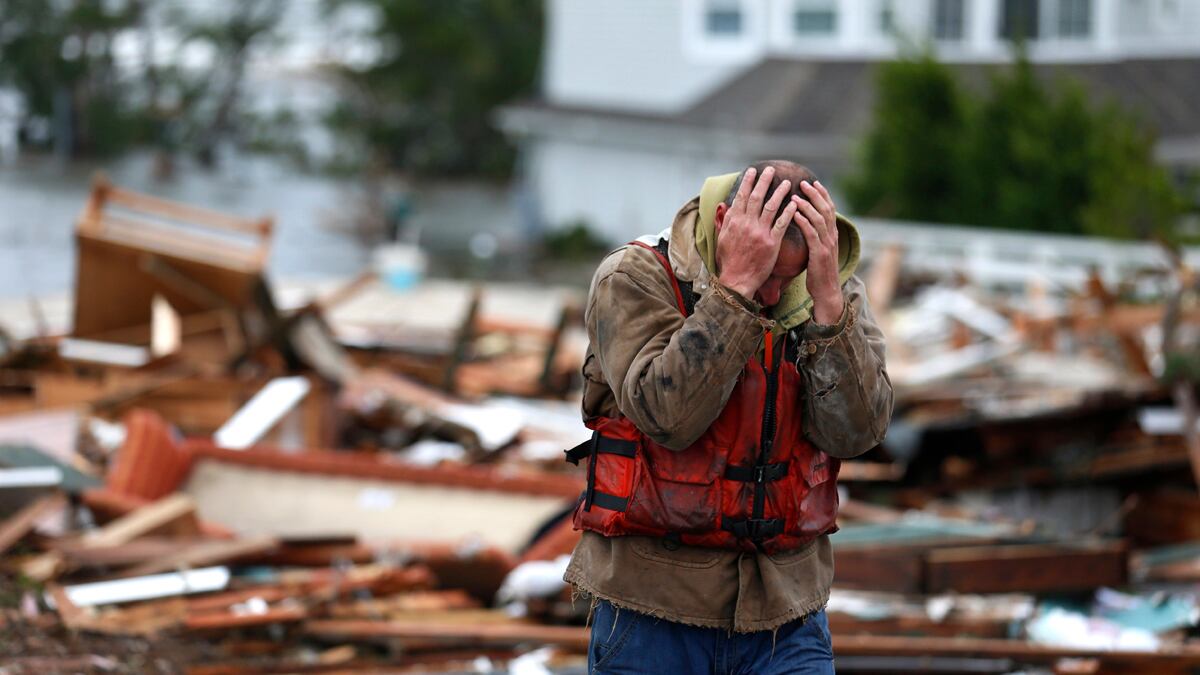As workers clear debris, the estimates for the economic impact of Sandy continue to come in. And they are all over the place. The risk modeling firm Eqecat estimated insured losses from Hurricane Sandy would be between $5 and $10 billion, while total economic losses would be between $10-20 billion. The catastrophe modeling firm AIR Worldwide put the projected insured losses between $7 and $15 billion. This does not include payouts to be made by the National Flood Insurance Program (NFIP).

The NFIP is a federal program that subsidizes flood insurance that is required for homeowners with government-backed mortgages in low-lying areas. In addition, some banks require purchase of flood insurance in certain areas, said Robert DiUbaldo, an attorney at Edwards Wildman.
Beyond losses to property, businesses will be seeking payment for losses incurred during the storm. Diubaldo notes that businesses can collect for losses that arise due to interruption to business, or because suppliers and customers are stranded. Diubaldo explained that claims related to “contingent business interruption” policies spiked around the earthquake and tsunami in 2011 in Japan as supply chains were disrupted. Something similar can happen with Sandy. Traffic in and out of Manhattan is sluggish at best, with workers and shoppers only able to get across the East River by car. Entire commercial areas on the Jersey Shore have been devastated by the storm, along with the homes of the people who shop there and the roads to get to those communities.
According to the ratings agency Fitch, these claims can also be triggered if a “civil authority” prevents people from going into a certain area. With the mandatory evacuations up and down the Jersey Shore and low-lying areas of Manhattan, including much of Lower Manhattan, the financial center of the world, there is every reason to expect real losses followed by real payouts.
Whether insured or not, the disruptions are indicative of real damage and real costs to the economy. Mark Zandi, the chief economist at Moody’s Analytics, wrote on Wednesday that Sandy was sure to be one of the 10 most costly natural disasters. Robert DiUbaldo and other insurance experts put the likely combined cost at less than the damage done by Katrina, which caused just over $157 billion in damage and loss of economic output, but above last year’s Hurricane Irene, which caused $12.6 billion in combined damage. Hurricane Andrew, which devastated Miami in 1992, was the second costliest hurricane ever, cost the country $13.1 billion in lost output and $41.3 billion in damages, according to Moody’s. While devastating, Sandy is not likely to cripple the insurance or reinsurance industries with massive payouts.
As for the overall economic impact, there is some dispute. There’s no question that Sandy is sandbagging economic activity around the country. Since Saturday, according to Flightstats, 19,574 flights have been cancelled in the U.S. due largely to the storm. The machinery of home sales, mortgage financings, and stock trading has ground to a halt. Halloween, which injects a huge amount of cash into local economies, was essentially cancelled.
On Tuesday, economists at IHS Global Insight, a consulting firm, wrote that “the effect on growth for the fourth quarter will not be catastrophic but might still be noticeable, especially in an economy with little momentum anyway.” Much of the economic activity—cancelled plane flights, deferred retail purchases—that didn’t take place in October due to Sandy will likely take place in November or December. But not all of it will. “Suppose that the affected regions lose just 25 percent of their overall output for two days that is not recoverable later,” HIS writes. “That would knock about $25 billion annualized ($6 billion actual) off GDP, and could take as much as 0.6 percentage points off annualized fourth-quarter real GDP growth rate.” Given that the economy is growing at an annualized rate of about two percent, that would make Sandy a significant drag on the economy.
Mark Zandi of Moody’s, on the other hand, is more sanguine. “The lost economic output will likely be made up over the coming weeks,” he writes. What’s more, since much of the damage occurred in relatively affluent residential and commercial areas, many of the businesses and individuals who suffered are covered by insurance. Rather than simply suffering massive losses to the economy, Northeast region will be buoyed by transfers from insurance companies. In fact, Zandi argues, “If property damage totals about $20 billion and is largely repaired by the end of December, there will be no impact on fourth quarter GDP.”
That’s good news for the economy at large. But it’s little solace to someone in Breezy Point whose home burned down or a restaurant owner in Ocean Beach, or even those hundreds of thousands in Lower Manhattan who still don’t have power. When disaster strikes, the best that can be hoped for is that someone will show up to pay some of the bills.






